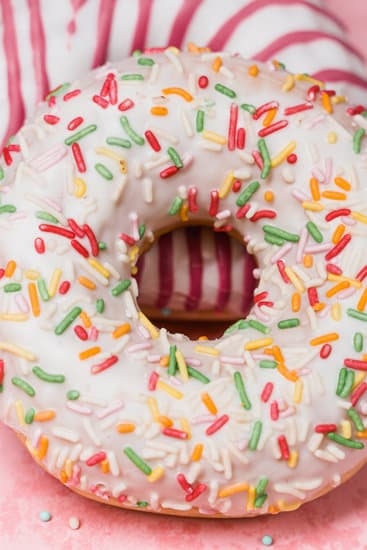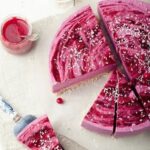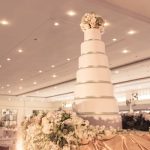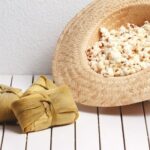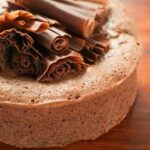Have you ever wondered how to practice cake decorating without a cake? Mastering the art of cake decorating requires consistent practice and honing of skills. While working on actual cakes is essential, practicing without a cake can be equally beneficial in refining techniques and experimenting with new ideas. In this guide, we will explore the importance of practicing cake decorating without a cake and provide step-by-step instructions on how to do so effectively.
Practicing cake decorating without a cake allows decorators to enhance their skills without the pressure of working on a real dessert. By using dummy cakes or other substitutes, decorators can focus solely on perfecting techniques such as fondant work, piping, sculpting, color mixing, and royal icing application. This method also provides an opportunity to experiment with different designs and styles before executing them on an actual cake.
In the following sections, we will discuss the tools and materials needed for practicing cake decorating without a cake, as well as provide detailed guides on fondant techniques, piping tips, sculpting methods, color mixing instructions, and royal icing applications. By incorporating these practices into your routine, you can improve your skills, boost your confidence, and ultimately create stunning works of edible art.
So let’s dive in and discover the endless possibilities of honing your cake decorating skills without a cake.
Tools and Materials Needed
When it comes to practicing cake decorating without an actual cake, having the right tools and materials is essential for honing your skills. While you may not be working on a real cake, using the proper equipment will help you master different techniques and improve your overall decorating abilities. Here are some of the essential tools and materials you will need to practice cake decorating without a cake:
- Rolling pin: A rolling pin is necessary for rolling out fondant or gum paste to practice sculpting and covering cakes.
- Fondant/Gum paste tools: These tools include cutters, shaping tools, and smoothers for working with fondant or gum paste in various ways.
- Piping bags and tips: Practice piping techniques with different tips and bags to create different designs on your “practice cakes.”
- Food coloring: Having a variety of food coloring options will allow you to practice mixing different shades and colors for your decorations.
Additionally, having a sturdy work surface such as a silicone mat or non-stick board will make it easier to work with your materials. Make sure to have some cornstarch or powdered sugar on hand for dusting surfaces when working with fondant or gum paste. With these tools at your disposal, you can effectively simulate cake decorating scenarios without actually needing a real cake.
Regardless of whether you have a physical cake to work on, practicing with these tools will enhance your skills and creativity in the realm of cake decorating. By familiarizing yourself with these essential items and incorporating them into your practice sessions, you can level up your decorating abilities even without the presence of a real cake.
- Practice using different piping tips to create varying designs such as rosettes, shells, or intricate patterns.
- Experiment with color mixing techniques by combining primary colors to achieve custom shades for your decorations.
- Try sculpting figures or shapes out of fondant or gum paste using shaping tools and molds to enhance your sculpting skills.
Fondant Practice
Fondant is a versatile and popular decoration for cakes, but it can be tricky to master. Fortunately, you can practice fondant techniques without even needing a cake. This allows you to perfect your skills before moving on to decorating a real cake. One of the best ways to practice fondant techniques without a cake is by using dummy cakes or even just pieces of Styrofoam shaped like a cake.
Materials Needed
To practice fondant techniques without a cake, you will need some essential tools and materials. These include fondant (store-bought or homemade), rolling pin, cornstarch or powdered sugar for dusting, fondant smoother, pizza cutter or sharp knife, and various cutters and molds for creating different shapes and designs.
Step-by-Step Guide
- Start by kneading the fondant until it is pliable and smooth.
- Roll out the fondant on a clean surface dusted with cornstarch or powdered sugar to prevent sticking.
- Use the rolling pin to transfer the fondant onto your dummy cake or Styrofoam piece, gently smoothing it over the surface with your hands.
- Trim off any excess fondant with a pizza cutter or sharp knife.
- Now you can practice various fondant techniques such as texture imprinting, embossing, ruffling, pleating, draping, and creating 3D decorations like flowers and figurines.
By practicing fondant techniques without a cake, you can build confidence in your skills and experiment with different designs without the pressure of working on an actual cake. This way, when it comes time to decorate a real cake, you will have already mastered the art of working with fondant and create stunning edible masterpieces.
Piping Practice
When it comes to cake decorating, mastering piping techniques is essential for creating beautiful designs. The good news is that you can practice piping even without a cake. All you need is some basic materials like parchment paper, frosting, and piping bags to hone your skills.
One fun way to practice piping without a cake is by using parchment paper. Simply draw different shapes or patterns on the paper and place it on a flat surface. Then, fill your piping bag with frosting and start practicing your piping techniques on the parchment paper following the lines you drew. This allows you to perfect your hand movements and pressure control before working on an actual cake.
Another useful method for practicing piping without a cake is by using a practice board. These boards are designed with grooves and shapes that mimic the surface of a real cake. You can use them to work on various piping techniques such as borders, flowers, and writing. Practice boards are great tools for beginners as they provide a structured way to improve your piping skills before moving on to decorating actual cakes.
Lastly, don’t forget about the importance of consistency in your frosting when practicing piping techniques without a cake. Make sure that your frosting has the right texture – not too stiff or too runny – to achieve clean and precise lines. Experiment with different icing consistencies until you find what works best for the designs you want to create. Remember, practice makes perfect, so keep at it until you feel confident in your piping skills.
| Piping Practice Tips | Useful Info |
|---|---|
| Practice on parchment paper | Helps improve hand movements |
| Utilize practice boards | A structured way to enhance skills |
| Focus on icing consistency | Important for clean lines in designs |
Sculpting Practice
When it comes to cake decorating, sculpting is a skill that can truly elevate your creations. Whether you want to create intricate figures or stunning designs, practicing cake sculpting without a cake can help you hone your skills and perfect your technique. But how exactly can you practice sculpting without a cake? By using alternative materials and tools, you can effectively work on your sculpting skills before transferring them to a real cake.
Materials Needed
To practice cake sculpting without a cake, you’ll need some basic materials such as modeling clay or fondant, sculpting tools like knives and shaping tools, and reference images or guides to help you visualize your designs. Modeling clay is great for practicing intricate details and shapes, while fondant provides the flexibility needed to mimic the texture of cake when sculpting. Having the right tools at hand will make the process smoother and allow you to experiment with different techniques.
Techniques for Practicing
Start by choosing a simple design or figure that you want to recreate in your practice session. Use the modeling clay or fondant to shape the base of your sculpture, focusing on proportions and dimensions. As you progress, use sculpting tools to add details like facial features, clothing textures, or any other intricate elements.
Remember to take your time and continuously refine your work until you are satisfied with the result. By practicing consistently and experimenting with different techniques, you will improve your sculpting skills and be better prepared for when it’s time to decorate a real cake.
Tips for Success
One key tip for practicing cake sculpturing without a cake is not being afraid to make mistakes or start over if needed. Embrace the learning process and view each practice session as an opportunity to grow and develop your skills.
Additionally, don’t hesitate to seek inspiration from professional cake artists or online tutorials to learn new techniques and get creative ideas for your sculptures. With dedication and patience, you’ll see improvement in your sculpting abilities which will ultimately translate into beautifully decorated cakes when the time comes.
Color Mixing Practice
Practicing color mixing for cake decorating without an actual cake can be a fun and valuable exercise in honing your skills. One way to practice mixing colors is by using fondant or modeling chocolate as your canvas.
Start by selecting a few primary colors of fondant or modeling chocolate and experiment with blending them together to create different shades and tones. This hands-on approach allows you to familiarize yourself with color theory and gain confidence in creating custom colors for your cake designs.
Another method for practicing color mixing without a cake is by using paper or cardboard cutouts shaped like cake layers. You can then apply different colored buttercream or royal icing to these cutouts, simulating the process of icing a real cake. This exercise not only helps you perfect your color mixing skills but also gives you a better understanding of how different colors interact with each other when used in decorating.
Additionally, utilizing food coloring markers on edible paper can provide a creative way to practice mixing colors for cake decorating without the need for an actual cake. By sketching and blending colors on the edible paper, you can experiment with various color combinations and techniques before transferring your ideas onto a real cake.
This method allows for precision and control over your color choices, making it a valuable tool in enhancing your overall decorating skills. Practicing color mixing without a cake may seem unconventional, but it is a practical and effective way to refine your abilities and expand your creativity in the world of cake decorating.
Royal Icing Practice
Practicing royal icing techniques without a cake is a great way to improve your skills and precision before diving into decorating an actual cake. Here are some useful tips and techniques for mastering royal icing without the pressure of a real cake:
- Prepare your royal icing consistency: Start by preparing your royal icing to the right consistency, whether it be for outlining, flooding, or intricate designs. Practice creating different consistencies by adjusting the amount of water in your royal icing recipe.
- Practice piping on parchment paper: Use parchment paper as your canvas to practice various piping techniques such as writing, scrolling, and lacework. This allows you to perfect your hand movements and pressure control without worrying about messing up a cake.
- Create royal icing decorations: Practice making intricate royal icing decorations like flowers, leaves, or intricate patterns on wax paper. This will help you build confidence in your freehand piping skills and creativity.
Remember that practicing with royal icing without a cake not only helps you refine your decorating skills but also allows you to experiment and try new techniques without the fear of making mistakes on an actual cake. By dedicating time to mastering royal icing outside of traditional cake decorating, you can elevate your skills and create stunning edible works of art when it comes time to decorate a real cake.
Whether you’re a beginner looking to learn the basics or an experienced decorator wanting to sharpen your skills, practicing with royal icing without a cake is an essential step in developing as a proficient cake decorator. Take advantage of this opportunity to explore new techniques, perfect your piping skills, and unleash your creativity with every stroke of the piping bag.
Real Cake vs Practice Cake
Practicing cake decorating without a cake can be a valuable way to build and refine your skills before working on an actual cake. One of the key benefits of practicing without a cake is the cost-effectiveness. Ingredients for cakes, especially those intended for decorative purposes, can add up quickly. By using substitute materials such as foam dummy cakes or even just sheets of cardboard, you can practice various techniques without the financial investment of baking an actual cake.
Another advantage of practicing without a real cake is the ability to make mistakes and learn from them without the pressure of ruining a baked creation. This experimentation allows for creative freedom and the opportunity to try different methods until you achieve the desired result. Additionally, practicing with substitutes like foam or cardboard can help you get comfortable with handling tools and materials before working on a delicate edible surface.
| Tools and Materials | Description |
|---|---|
| Fondant | Elastic icing used to cover cakes or create decorations |
| Piping bags and tips | Tools for applying intricate designs with icing |
| Royal icing | Hard white icing used for intricate designs or decorations |
Conclusion
In conclusion, practicing cake decorating without a cake is not only a valuable skill-building exercise but also a creative way to hone techniques and improve overall proficiency in the art of cake decoration. By utilizing tools and materials such as fondant, piping bags, sculpting tools, color mixing palettes, and royal icing, aspiring decorators can enhance their skills in various aspects of cake decoration without the pressure of working on an actual cake.
Learning how to practice cake decorating without a cake allows decorators to experiment with different techniques, perfect intricate designs, and explore their creativity without the fear of making mistakes on a real cake. This method of practice also offers the flexibility to try new ideas and refine one’s skills at any time or place.
Moreover, by focusing on specific areas like fondant work, piping techniques, sculpting methods, color mixing, and royal icing applications through dedicated practice sessions, decorators can truly master each aspect of cake decoration.
Ultimately, the benefits of practicing cake decorating without a cake are undeniable. It provides decorators with the opportunity to refine their skills, experiment with new techniques, and build confidence in their abilities.
By dedicating time to practicing various elements of cake decoration separately before combining them on a real cake, individuals can elevate their craft to a whole new level. So next time you find yourself eager to improve your cake decorating skills, remember that you can always practice without a physical cake – all it takes is dedication, creativity, and the right tools.
Frequently Asked Questions
How Can I Practice Cake Decorating Without Baking Cakes?
One way to practice cake decorating without actually baking cakes is by using dummy cakes or styrofoam cakes. These fake cakes provide a stable base for practicing various techniques like frosting, piping, and fondant decoration without the need to bake a new cake every time.
How Can I Practice Cake Decorating at Home?
Practicing cake decorating at home can be done by starting with simple tools like piping bags, tips, spatulas, and food colors. Watching online tutorials and enrolling in online classes can also help improve your skills. Additionally, practicing on dummy cakes or cupcakes can help refine your techniques before working on real cakes.
How to Decorate Cake Without Cake Stand?
Decorating a cake without a cake stand is possible by using items you already have at home like overturned bowls or pots as makeshift stands. Another option is to stack books of similar height to create a stable platform for frosting and decorating the cake. It’s important to ensure stability while working to avoid any mishaps during the process.

Welcome to our cake decorating blog! My name is Destiny Flores, and I am the proud owner of a cake decorating business named Cake Karma. Our mission is to provide delicious, beautiful cakes for all occasions. We specialize in creating custom cakes that are tailored specifically to each customer’s individual needs and tastes.

